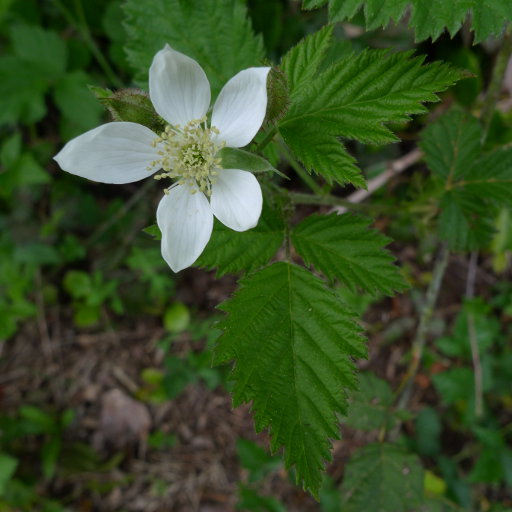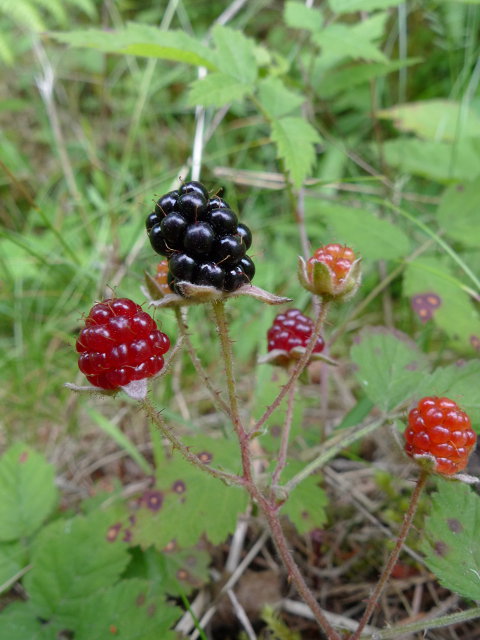Dewberry (Rubus ursinus)
Published at 12:55 on 2 July 2018


The Dewberry, also called the trailing blackberry, is probably the least-known of our wild blackberries. This is most likely for two reasons:
- They are physically smaller than the more well-known Himilayan (Rubus armeniacus) and Evergreen (Rubus laciniatus) blackberries.
- They have been outcompeted by these two nonnative species thus are not as numerous, either.
As alluded to in the list above, the Dewberry is our native wild blackberry; the other two ones mentioned are the introduced ones that take over and dominate virtually any vacant space in short order. While its numbers may be somewhat reduced, despite that there is thankfully no shortage of Dewberries in this region.
While it can be easy to find Dewberry plants, finding ones that are bearing fruit can be significantly harder. That is because unlike its introduced relatives (and most plants), Dewberries, like most animals, come in separate male and female individuals. So unless you find a female patch with at least one nearby male patch, you will not be seeing any berries on these. (The Dewberry’s canes tend to root as they trail, so this plant is typically found in large, clonal patches.)
Instead of having giant, ferociously thorny canes that can grow 20 feet or more per year and make thickets 10 or more feet high, the Dewberry is a much smaller and less aggressive plant. As its other name implies, it typically trails low to the ground. While thorny, its thorns are far smaller and thinner than of its two introduced cousins.
I hesitate to mention it, because it might increase competition for the berries I harvest, but the Dewberry is one of our best-flavored berries. It figures in the parentage of the loganberry and the boysenberry, and was bred into these cultivated berries specifically for its flavor.
The fruit is smaller and not borne in the great profusion that it is on our introduced blackberries, so it can be difficult to find Dewberries in quantity sufficient for use in recipes calling for blackberries. I have my secret spots, and have managed to make large enough harvests several times; in each case, the results got rave reviews from all who sampled them.
And before anyone asks: no, I will not be sharing the locations of these spots!
